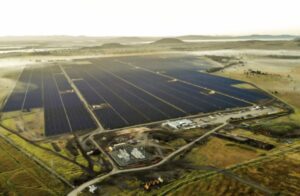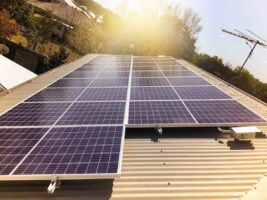Australian network operators have warmly embraced the conclusions from Ausgrid’s four-year, $100 million Smart City, Smart Grid program, which call for a system of “dynamic tariffs” to be introduced to control the proliferation of distributed generation, such as rooftop solar PV and storage.
The Ausgrid report, prepared by consulting firm Arup with the help of others, suggests Australia could reap $28 billion in benefits from the introduction of a “smart grid” over the next two decades.
But it also warns, in a note seized upon by the Energy Networks Association, that Australia risks $10 billion in over-investment in distributed generation if not managed properly – or if solar and storage are not subject to the “cost reflective” tariffs.
“If we stick with current electricity tariffs using outdated meters, the report predicts a more costly system with consumers paying $10 billion more than they need to, due to over-investment in onsite generation and storage,” ENA CEO, John Bradley said in a statement on Monday.
Bradley said there was a risk of higher and “unfair cross-subsidies”, if “early adopters” of new generation and storage technology passed costs to other users. “Tariff reform is essential if we are to avoid an electricity world of ‘haves’ and ‘have nots’ where those with onsite generation and storage are effectively cross-subsidised by other users, which in the report is estimated at $420 per year.”
There is no doubt that rooftop solar and battery storage present the biggest threat to the grid operator’s business in more than a century of poles and wires – and managing this will not just be the key to the business models of those operators, but also the costs to the customers they serve.
And RenewEconomy is no fan of the idea of thousands of individual houses quitting the grid. It seems to us as a huge misallocation of capital, and dynamic tariffs could help address that – but only if they are truly “cost reflective”.
That means not designing tariff responses that seek to penalise adopters of solar and battery storage, but to address the built-in legacy costs of over-capitalised grids, built to respond to the indiscriminate, uncontrolled and heavily subsidised use of technologies that increase demand, such as air conditioners.
It’s not good enough to simply blame the adopters of solar and storage for the death-spiral. Those people will simply adopt the technology that makes economic sense for them. If the networks want to compete, they have to lower their costs.
The tables below are revealing of what the networks want to achieve by the introduction of “dynamic pricing” – a combination of a network capacity tariffs, retail critical peak pricing, or direct load control tariffs – to customers that have rooftop solar and/or storage.
The first is the residential case, where the introduction of dynamic pricing imposes charges of more than $300 a year on those with solar and or storage (the difference between the blue on the right and the pink on the left).
The Ausgrid report says this has the effect of reducing the supposed “cross subsidy” (the orange bits) from $420 to $42. Non solar customers are $156 better off, but the savings achieved by those with distributed generation are much reduced.
The impact is even more dramatic with business customers, which the report recognises have even greater incentive to install distributed generation, because of the nature of their consumption, and the production and storage characteristics of distributed generation. It suggests this could reduce the “cross subsidy” by two-thirds, but increase bills for those with solar and storage by 150 per cent over business as usual.
That’s all very well, but what exactly is this “cross-subsidy”? It’s not really stated, but basically it reflects the sunk investments in the networks – including the $45 billion over the past five years that has drawn accusations of network “gold plating”. In brief, critics have suggested that the investment was one-third, or twice what was needed, and simply served to make the grid “bigger and dumber” rather than smarter.
This is the elephant in the room. RenewEconomy, and others such as the Grattan Insititute, have suggested that the only way that the networks can compete with the introduction of new technologies – and solar and storage is really only scratching the surface of what is available – is to consider write downs on the value of those assets.
The question has to be asked as to why these “cross subsidies” are important to solar and storage, and were not, and are not, for rampant demand boosters such as air-conditioners – the growing uptake of which was used to justify the huge investment in poles and wires that has caused most of the near doubling in consumer electricity bills.
Indeed, the entire focus on the report is to try to address the supposed “cross subsidies” of those who “reduce consumption,” rather than those who increase it.
According to the Ausgrid/Arup document, dynamic pricing would result in smaller rooftop solar PV systems (around 3GW less in total capacity) and about 1.8GW less combined heat and power in the NEM by 2034 – compared to business as usual.
By contrast, this would be balanced by around 3.5 GW of storage capacity.
The report estimates that up to $15.2 billion in avoided costs from the deployment of distributed generation and storage could be achieved through dynamic pricing. On the other hand, this means a need for increased volumes of centralised generation in order to meet consumer electricity consumption and peak demand requirements. This results in increased centralised generation costs (such as additional fuel and other operational costs) of $5 billion.
But the report also seems to be making some interesting bets. One is the idea that storage technologies will not be economic to be deployed until 2024, and that is only with “dynamic tariffs.”
Another is the assumption that smart metering – one of the key technologies that underpin the “smart grid” concept – is not made redundant in coming years by the arrival of other software, which offer controls through the “cloud’ that bypass the grid. As it is, this report suggests that smart meters may not deliver an economic return at scale for another 10 years.
Confusingly, it also notes:
“Modelling showed that despite anticipated price reductions in distributed storage devices, without changes to retail electricity pricing structures (i.e. under BAU) there will be no deployment of storage through to 2034 in Australia. Modelling clearly shows that the existing tariff structures effectively discourage the uptake of battery storage technologies.”
That’s a completely different take to anecdotal evidence of battery prices, and predictions by analysts such as those at UBS, who see solar and storage in combination offering a competitive alternative to staying with the grid.
That’s the big challenge for the utilities – how to price their service to stop a mass migration to alternatives. Slapping extra charges on solar and storage, and doing nothing about the legacy costs of an over-capitalised grid, is unlikely to be the answer.










